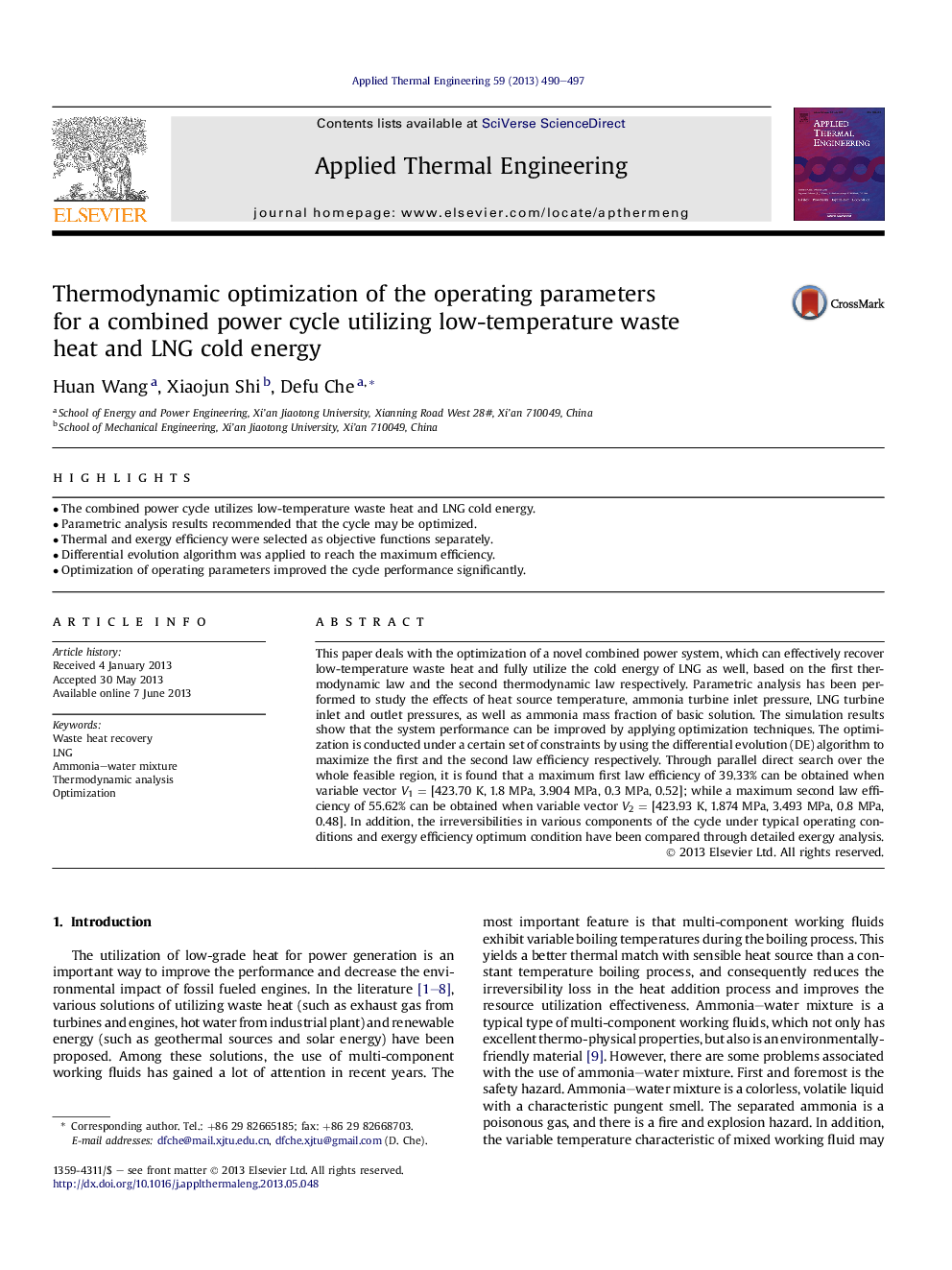| Article ID | Journal | Published Year | Pages | File Type |
|---|---|---|---|---|
| 7050084 | Applied Thermal Engineering | 2013 | 8 Pages |
Abstract
This paper deals with the optimization of a novel combined power system, which can effectively recover low-temperature waste heat and fully utilize the cold energy of LNG as well, based on the first thermodynamic law and the second thermodynamic law respectively. Parametric analysis has been performed to study the effects of heat source temperature, ammonia turbine inlet pressure, LNG turbine inlet and outlet pressures, as well as ammonia mass fraction of basic solution. The simulation results show that the system performance can be improved by applying optimization techniques. The optimization is conducted under a certain set of constraints by using the differential evolution (DE) algorithm to maximize the first and the second law efficiency respectively. Through parallel direct search over the whole feasible region, it is found that a maximum first law efficiency of 39.33% can be obtained when variable vector V1Â =Â [423.70Â K, 1.8Â MPa, 3.904Â MPa, 0.3Â MPa, 0.52]; while a maximum second law efficiency of 55.62% can be obtained when variable vector V2Â =Â [423.93Â K, 1.874Â MPa, 3.493Â MPa, 0.8Â MPa, 0.48]. In addition, the irreversibilities in various components of the cycle under typical operating conditions and exergy efficiency optimum condition have been compared through detailed exergy analysis.
Related Topics
Physical Sciences and Engineering
Chemical Engineering
Fluid Flow and Transfer Processes
Authors
Huan Wang, Xiaojun Shi, Defu Che,
